(10782 products available)








































































































































































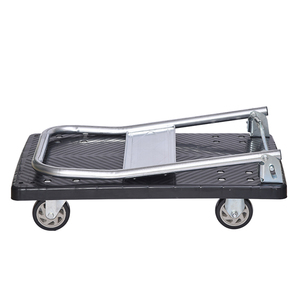
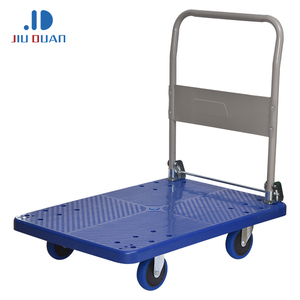
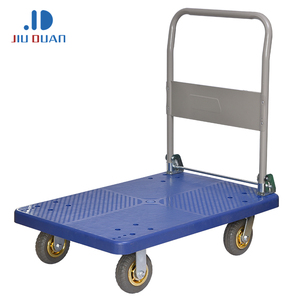
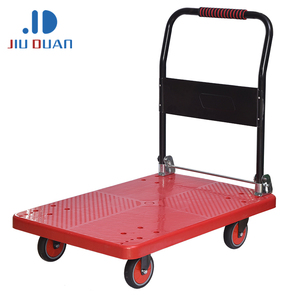
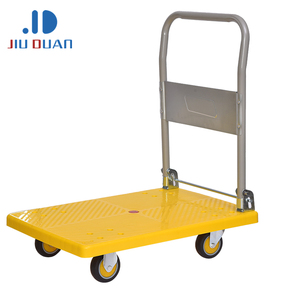

























Lifting hand trolleys, widely known as hydraulic hand trucks, come in diverse types and each one of them is equipped with distinct operational mechanisms. These models include lifting platforms, pallet jacks, and more specialized versions, including those for stair climbing and foldability. In addition, these differences are purposely made to attend to particular demands in manufacturing facilities and warehouses.
As much as lifting platforms and pallet jacks are available, there exist numerous simple hydraulic hand trucks. Such platforms incorporate manual hydraulic pumps, which are operated by hand to raise the load to the required height. While giving the operator control over lifting the load, such types are regarded as best for lighter loads and lesser lifting frequencies. Their simple construction contributes to the reduction of the cost of their purchase and increases their ease of use.
Powered lifting hand trolleys save on time and efforts since loads can be raised and moved using either battery or electric power. These are the best types of equipment to use when the lifting and transportation of heavy materials is not done frequently. Driven mechanisms do away with human efforts necessary to hydraulically operate the pumps manually. They are therefore beneficial when there is a great need to handle many products.
Pallet jacks, also known as pallet trucks, are the tools utilized in raising loads that have been placed on pallets within a warehouse. The construction of this equipment consists of forks that slide into the pallet and a hydraulic system that raises or moves the load. Some of these models are equipped with manual pumps; others have powered pumps. These jacks are primarily used in the transportation of goods around an area without the use of a forklift truck.
Scissor lift hand trolleys come with a scissor lift mechanism, which provides an expandable means of raising loads to particular heights. They are ideal for loading or offloading goods on vehicles and operate best with alterations in loading or unloading conveyor systems. They have high stability and design properties, therefore ideal for usage in industries.
Lifting hand trolleys are important lifting and handling equipment in manufacturing facilities and industries. They can be employed in many activities, including food and beverage processing and steelmaking. Hence, they are ideal for lifting and transporting many materials.
The equipment works best in transporting loads that are beyond human capacity. In the manufacturing industry, materials often come in large quantities, hence the necessity of manual tools to assist in the movement of such loads. It is easy to move machines and parts, large metal coils, or heavy machinery with the aid of hydraulic lifts. When transporting heavy items, manual labor is eliminated from the equation, and injuries are reduced.
Scissor lifts on wheels are primarily used to load and offload trucks and containers due to their characteristic operation. In warehousing and distribution, this equipment aids in moving products from one level to another. It also promotes the transition from one mode of transportation to another. These trolleys assist people in loading products onto vehicles, lifting them to the required height.
Lifting hand trolleys play a significant role in the implementation of storage solutions within warehouses. With the aid of such equipment, goods can be organized on shelves and moved from one area to another. In addition, it helps optimize available space in a warehouse by facilitating the stacking of products on the highest available shelves. When employed in storage facilities, these trucks make handling products more efficient.
Hydraulic hand trucks are frequently used to move raw materials and components in the manufacturing sector. Their importance in production lines is especially noted when transporting items from one workstation to another. Produced items are also conveyed through machinery to improve workflow. In addition, the products handled include chemicals, metals, and food, among others.
In industries with mechanical and equipment usage, lifting hand trolleys are essential tools used in maintenance activities. For example, when dealing with machinery, parts within machines may be very heavy, hence the need to use a lifting hand trolley. These trolleys are especially useful when operating equipment and providing easy access to the components found within the system. They are of great importance, especially in industries that require frequent maintenance work.
The specifications of lifting hand trolleys include the lifting load capabilities and the ranges of the lifting sizes and the construction components. For example, a mechanical device that aids in lifting heavy items consists of hydraulic cylinders and a load frame. In other words, the electrohydraulic devices have a pump that is electrically operated, while the manual ones incorporate a lever-operated pump.
The hydraulic hand trolley specification usually comprises the following key aspects:
It is very important for the lifting hand trolleys to be of good quality and safe to use. Knowledge is power, and quality in materials used, as well as safety features such as overload sensors, are critical for this function. Therefore, certified products, such as lift trolleys from Chinese suppliers, pay special attention to these issues.
A1: Hydraulic lifting hand trolleys are best used on flat and smooth surfaces. On rough or inclined surfaces, wheeled stair trolleys are more appropriate. They come with either a steel or aluminum frame for easy maneuvering on stairs. In addition, the wheels or tracks are designed to provide stability and traction over the rough surface. In addition, they help reduce the difficulty of navigating steep or uneven terrain.
A2: During operation, general maintenance is needed daily for commercial lifting hand trolleys. Daily maintenance includes checking the hydraulic system for leakage and ensuring all moving parts are lubricated. Also, check the brakes and wheels for any faults. It also includes looking for any visible signs of damage or wear. In addition, users should do a more thorough inspection weekly or monthly. This includes checking the wheels for wearing and tearing and the frame for rust.
A3: Every model of the hydraulic hand trolley has its own limit for how much weight it can carry. Make sure to follow the manufacturer's guidelines and do not overload the trolley. This creates stress on the chassis, pump, and hydraulic system. The risk of the equipment failing or collapsing increases if these guidelines are not followed. The operator also has a bigger chance of being hurt when an overload happens. Overall, underloading improves stability and safety.
A4: The hydraulic system depends on carrying heavy objects. Hydraulics are the mechanical systems within which force is transmitted using liquid. Users should fill the cylinder with hydraulic oil. They should use the kind of oil the manufacturer recommends. Do not let the oil level go any lower than what is essential. Check for air bubbles and remove them if present. It prevents lowering or rising from being difficult.
A5: Lifting hand trolleys are suitable for lifting and moving materials indoors, such as in factories, warehouses, and workshops. For outdoor applications, consider using a pneumatic tire cart. Other aspects like dust, extreme weather, and moisture can damage the hydraulic system. However, some models are specifically designed for outdoor use.